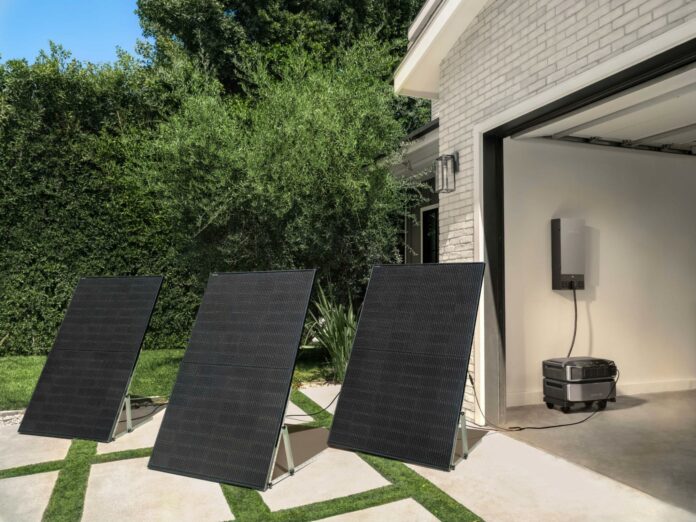Table of Contents
Solar energy, a clean, inexhaustible power source harnessed from the Sun, is transforming our approach to energy consumption and production.
Solar energy’s journey from a simple concept to a key player in the global power landscape highlights the remarkable advancements in technology and sustainability efforts over the last century.
As we explore the origins and applications of solar energy, we’ll outline the intricate processes and innovations that make this natural resource a cornerstone of renewable solutions. Join us as we explore the science, impact, and potential of solar power in driving the future of sustainability.
Where Does Solar Energy Originate From?
Solar energy originates 93 million miles away in the heart of our star, the Sun. The Sun merges hydrogen atoms into helium through nuclear fusion, releasing vast amounts of power in light and heat. This energy travels through space, reaching Earth as sunlight, a mix of visible light, ultraviolet, and infrared radiation.
Once reaching Earth, this radiation can be converted into electrical power, an increasingly efficient and practical means of producing electrical power through advances in modern science and technology. Today, robust solutions like EcoFlow’s Solar Generators are widely available, providing independence and peace of mind to millions worldwide. They capture sunlight using photovoltaic cells, converting it into electrical energy that can power homes, devices, and even remote adventures, tapping directly into the Sun’s abundant reservoir for near-limitless renewable power.
How Is Solar Energy Then Converted Into Usable Energy?
The conversion of solar energy into usable electricity begins with photovoltaic (PV) cells, the key component in any panel.
Solar cells are constructed from semiconductor materials, typically silicon, and absorb photons from sunlight to generate an electrical current.
This phenomenon, known as the photovoltaic effect, is at the heart of solar energy conversion.
(Source: Energy Education)
When sunlight strikes solar cells, electrons are energetically excited, allowing them to conduct through the semiconducting material.
An electric field within the PV cell then directs these free electrons into an organized flow, or current, through conductive metal plates. This flow is the direct current (DC) electricity that PV panels produce.
However, for this electricity to be utilized in homes and businesses, it first needs to be converted from DC to alternating current (AC), the form of electricity used by most appliances and the utility grid.
An inverter, another critical component of PV systems, accomplishes this conversion. The resulting AC can be used directly or stored in battery storage systems like EcoFlow Portable Power Stations, ready to use whenever you need power.
Which Countries Produce the Most Solar Energy?
1. China
China stands as the undisputed leader in solar energy production, significantly outpacing other countries. The nation has made monumental investments in technology and infrastructure, leading to a massive increase in its capacity. China’s installed capacity constitutes about 33% of the world’s total solar energy production as of 2021, making it the largest producer in the world.
2. United States
The United States ranks as the second largest producer, with a 16% share of global production as of 2021. This growth is driven by utility-scale projects and increasing residential installations, bolstered by federal tax credits and various state-level incentives, encouraging the adoption of renewables. The U.S. is also a hub for sustainable technology innovation, with companies like EcoFlow developing advanced solar panels contributing to the country’s renewable energy landscape.
3. Japan
Japan has shown a strong commitment to renewable power, particularly following the Fukushima Daiichi nuclear disaster in 2011. Japan’s capacity comprises about 9% of the world’s total production, which is even more impressive considering its limited land area and moderate irradiation conditions. Japan has innovated with unique solar power solutions such as floating farms, and the Japanese government continues to support these endeavors through various incentives, including feed-in tariffs, which have significantly accelerated adoption.
4. India
India is rapidly emerging as a global leader in solar energy, driven by its ambitious renewable energy goals and favorable geographic conditions. As of the latest data, India’s power capacity is 6% of global production, a percentage that is expected to increase. The country’s National Solar Mission has played a pivotal role in this expansion, aiming to promote it as a sustainable and economically viable option.
5. Germany
Germany is a pioneering force in the global renewable energy sector, renowned for its remarkable achievements despite its less-than-ideal irradiance conditions. Constituting approximately 5% of global production, Germany demonstrates the potential of policy and innovation in driving the adoption of renewable energy.
Frequently Asked Questions
Solar energy travels from the Sun to Earth through space as radiation. This radiation, consisting of photons, covers a range of electromagnetic waves, including visible light, ultraviolet, and infrared rays. Upon reaching Earth, this energy can be harnessed using technologies like PV panels to generate electricity.
China is the world’s largest solar power producer by some distance. With an installed capacity exceeding 250 gigawatts, China leads the global market, driven by significant investments in technology and manufacturing and supportive government policies promoting renewable energy development.

Final Thoughts
Solar energy is a cornerstone of our renewable energy future. With countries like China, the United States, India, Japan, and Germany leading in its production, the global shift towards sustainable power is evident.
We’re at the forefront of this transition, offering innovative solar panels, portable power stations, and solar generators.
Discover how to harness the Sun’s power by visiting us at EcoFlow today.
